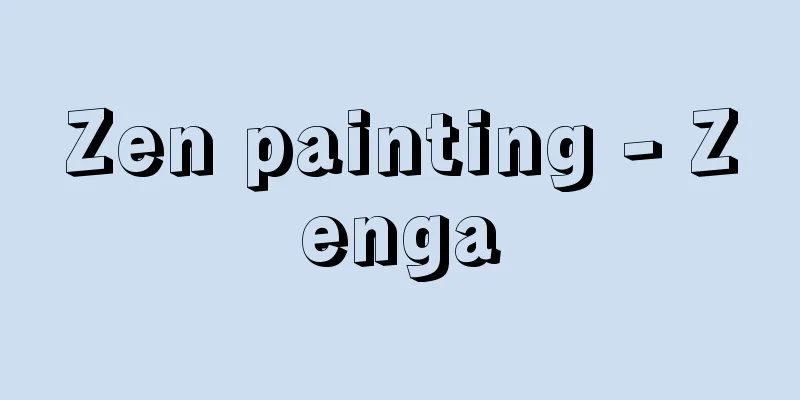Electromagnetic waves

|
The properties of an electromagnetic field are very different when it changes over time and when it does not. An electromagnetic field that does not change over time is called a static magnetic field. When an electromagnetic field changes over time, electromagnetic waves are generated. Electromagnetic waves are physical entities that propagate through a vacuum and have energy, momentum, angular momentum, etc. At the same time, they have the nature of wave motion, so they can be characterized by wavelength or frequency. Electromagnetic waves are composed of electric waves and magnetic waves, both of which are transverse waves, and the direction of vibration of each defines the direction of polarization of the electromagnetic wave. The simplest form of electromagnetic wave is a linearly polarized plane electromagnetic wave, where electric waves and magnetic waves vibrate in planes that are perpendicular to each other, and the electromagnetic wave propagates in the direction of the intersection of these planes. Electromagnetic waves are classified by wavelength and are often called by different names. What is called light or visible light is nothing more than electromagnetic waves with wavelengths between 400 and 800 nanometers (1 nanometer is 10 -9 meters). In a vacuum, the propagation speed of electromagnetic waves is constant regardless of wavelength, and its value is the speed of light c = 2.99792 x 10 8 m/s. The source of electromagnetic waves is a moving charged particle (such as an electron or an atomic nucleus). When that motion has a non-zero acceleration component, the generated electromagnetic wave can propagate energy and momentum. This phenomenon is called electromagnetic radiation. The emitted electromagnetic wave travels in a straight line through a vacuum. When electromagnetic waves encounter a material, they interact with charged particles such as electrons and atomic nuclei in the material. As a result of the interaction, two types of phenomena can occur. One is the absorption of electromagnetic waves by the material, in which the energy of the electromagnetic waves is converted into the internal energy of the material. The other is the scattering of electromagnetic waves by the material. The interaction causes the charged particles in the material to accelerate, so the charged particles that interact with the electromagnetic waves radiate electromagnetic waves. This is how electromagnetic waves are scattered, and the radiated electromagnetic waves form scattered waves. The details of the absorption and scattering properties vary greatly depending on the wavelength of the electromagnetic waves and the properties of the material. The scattered waves that are radiated outside the material form reflected waves. On the other hand, the scattered waves that are radiated inside the material travel through the material while repeating similar scattering. Due to the repeated scattering process, the propagation speed of electromagnetic waves in materials is generally different from that in a vacuum and is determined by reflecting the properties of the material. In this way, the propagation speed differs depending on the medium, and electromagnetic waves are refraction. Since electromagnetic waves have a non-zero momentum component in the direction of their propagation, they exert a pressure on matter when they interact with it. This pressure is called light pressure. All of the above properties of electromagnetic waves can be quantitatively derived using Maxwell's system of equations. Maxwell's system of equations and the properties obtained using it are almost complete in describing the behavior of electromagnetic waves in a vacuum. When there is interaction with matter, Maxwell's system of equations in matter is used. This is an extended interpretation of Maxwell's system of equations in a vacuum, and can be obtained by adding appropriate conditions and assumptions. Although some of these assumptions are not necessarily self-evident, there are no serious difficulties as far as most macroscopic phenomena are concerned. [Hiroshi Yasuoka] "Basic Electromagnetic Waves - From Maxwell's Equations to Geometric Optics" by Jin Tokumaru (1992, Morikita Publishing)" ▽ "Illustrated Trivia on Electromagnetic Waves" by Toshifumi Nimase and Osamu Aso (1999, Natsume Publishing)" ▽ "Light and Electromagnetic Wave Engineering" by Kenichi Kagoshima, edited by the Institute of Electronics, Information and Communication Engineers (2003, Corona Publishing)" [Reference] |©Shogakukan "> Propagation of electromagnetic waves in a vacuum Source: Shogakukan Encyclopedia Nipponica About Encyclopedia Nipponica Information | Legend |
|
電磁場の性質は、電磁場が時間的に変化する場合と、しない場合とで大きく異なる。時間的に変化しない電磁場は静電磁場とよばれる。電磁場が時間的に変化する場合には電磁波が発生する。電磁波は真空中を伝搬する物理的実体であって、エネルギー、運動量、角運動量などをもつ。それと同時に波動としての性格をもっているので、波長または周波数によって特徴づけることができる。電磁波は電波と磁波とから構成されているが、これらはともに横波であって、おのおのの振動の方向が電磁波の偏りの方向を定義する。もっとも簡単な形をした電磁波は、直線的に偏った平面電磁波であって、電波と磁波とは、それぞれ互いに直交する平面内で振動しており、電磁波はこれらの平面の交線方向に伝搬する。電磁波は波長によって分類されて、それぞれ異なる名称でよばれることが多い。光あるいは可視光とよばれるものは波長が400~800ナノメートル(1ナノメートルは10-9メートル)の間にある電磁波のことにほかならない。真空中では電磁波の伝搬速度は波長に関係なく一定で、その値は光速c=2.99792×108m/sである。 電磁波を発生する源は、運動する荷電粒子(たとえば電子や原子核)である。その運動がゼロでない加速度成分をもつときには、発生した電磁波はエネルギーや運動量を伝搬することができる。この現象を電磁波の放射という。放射された電磁波は真空中を直進する。 電磁波は物質と出会うと、物質中の電子や原子核のような荷電粒子と相互作用をする。相互作用の結果として、2種類の現象がおこりうる。その一つは物質による電磁波の吸収で、その際、電磁波のエネルギーは物質の内部エネルギーに変換される。他の一つは物質による電磁波の散乱である。相互作用によって物質中の荷電粒子は加速度運動をするようになるから、電磁波と相互作用した荷電粒子は電磁波を放射する。電磁波の散乱はこのようにしておこり、放射された電磁波が散乱波を形成する。吸収や散乱の性質の詳細は電磁波の波長や物質の性質によって大きく異なる。散乱波のうち物質の外部へ放射されたものが反射波を構成する。一方、物質の内部へ放射された散乱波は、同様の散乱を繰り返しながら物質中を進行する。繰り返される散乱過程のために、物質中での電磁波の伝搬速度は一般に真空中でのそれとは異なり、物質の性質を反映して決まる。このように、媒質の違いによって伝搬速度が違うために、電磁波の屈折が生ずる。電磁波はその伝搬方向にゼロでない運動量成分をもっているので、物質と相互作用する際、物質に対して圧力を及ぼす。これを光圧という。 以上のような電磁波の諸性質はすべてマクスウェルの方程式系を使って定量的に導くことができる。マクスウェルの方程式系、およびそれを使って得られる諸性質は、真空中での電磁波の挙動を記述するものとしてはほぼ完全である。物質との相互作用がある場合には、物質中のマクスウェルの方程式系を用いる。これは真空中におけるマクスウェルの方程式系の拡張解釈であって、適当な条件や仮定を付加することによって得られる。これらの仮定のなかにはかならずしも自明ではない事柄が含まれているけれども、ほとんどの巨視的現象に関する限り、重大な困難は存在しない。 [安岡弘志] 『徳丸仁著『基礎電磁波――マクスウェル方程式から幾何光学まで』(1992・森北出版)』▽『二間瀬敏史・麻生修著『図解雑学 電磁波』(1999・ナツメ社)』▽『電子情報通信学会編、鹿子嶋憲一著『光・電磁波工学』(2003・コロナ社)』 [参照項目] |©Shogakukan"> 真空中の電磁波の伝播 出典 小学館 日本大百科全書(ニッポニカ)日本大百科全書(ニッポニカ)について 情報 | 凡例 |
>>: Electronic library - denshi toshokan (English) electronic library
Recommend
Xu-tang Zhi-yu (English: Kidōchigu)
[Live] Junxi 12 (1185). Zhejiang, Kaiji [Died] Kan...
Peoria - Peoria (English spelling)
A city in central Illinois, USA, facing the Illin...
Plethon (English spelling) Georgios Gemistos Plethon
A humanist in the Byzantine Empire. He came of ag...
Gatterer, JC - Gatterer
...In the 18th century (link), geography was defi...
Beach cleaning - Iso Souji
This refers to the removal of harmful algae such ...
Three Principles of the People
A political theory advocated by Sun Yat-sen, the ...
Bitter, F. (English spelling) BitterF
...The size of magnetic domains ranges from 10-4 ...
Kisaburo Onogawa
Year of death: Bunka 3.3.12 (1806.4.30) Year of bi...
shutter
...To control the exposure time, a shutter is pla...
Huelsenbeck, Richard
Born: April 23, 1892 in Frankenau [Died] April 20,...
Spiegel
…Leonardo da Vinci used the metaphor of a mirror ...
Inflation - Inflation
A phenomenon in which prices continue to rise, occ...
Flavius Valens
Roman Emperor (reigned 364-378). Born in Pannonia...
Japan Travel Bureau
…In 1941, it was renamed Toa Travel Agency, in 19...
Eight volumes of flower arrangement
This eight-volume Nohgaku handbook was compiled at...









